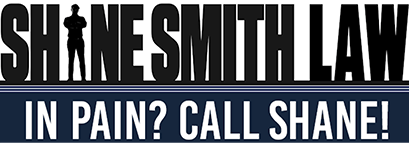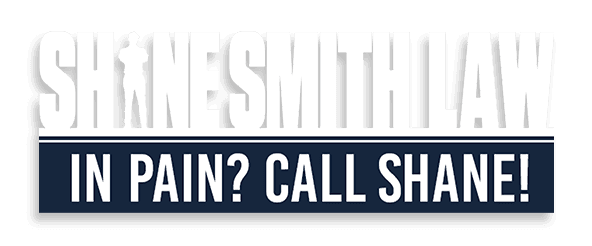Defining Product Liability
Legal Parameters of Product Liability
Product liability is a legal concept that serves as a protective shield for consumers, ensuring that the items they purchase are safe to use. It's a domain where the law holds manufacturers, distributors, and retailers accountable for the safety of their products. This legal framework is designed to compensate individuals who have been harmed by defective products, while also incentivizing companies to produce safer goods. Under product liability law, a company can be held responsible for a defective product regardless of whether they were negligent or not. This means that if a product is found to be inherently unsafe, the path to legal recourse for the injured party is more straightforward, emphasizing the importance of consumer safety over the intricacies of legal fault.
Categories of Product Defects
When it comes to product defects, they generally fall into three broad categories: design defects, manufacturing defects, and marketing defects, which include failure to warn. Design defects are inherent; they exist before the product is even made, indicating that there was an error in the product's blueprint that makes it unsafe. Manufacturing defects occur during the construction or production of the item, meaning that the final product is different from the intended design and, as a result, dangerous. Lastly, marketing defects are flaws in the way a product is sold, such as inadequate safety warnings or instructions, which can lead to misuse and subsequent injury. Understanding these categories is crucial for anyone affected by a defective product, as it helps pinpoint where the fault may lie and underpins the legal strategy for a product liability claim.
Establishing the Basis for a Claim
Proof of Injury or Damage
At the heart of any product liability claim is the necessity to demonstrate that there has been an actual injury or damage. This isn't just about stating that a product is defective; it's about showing that the defect has had a tangible, negative impact on the consumer's life. Whether it's a physical injury, property damage, or other forms of loss, the injured party must provide evidence of the harm suffered. This proof is the cornerstone of a claim, as it establishes the seriousness of the issue and the need for compensation. Without this evidence, the claim lacks the weight required to hold manufacturers and sellers accountable for their defective products.
Causation Link Between Product and Injury
Proving a direct link between the product's defect and the injury sustained is a critical aspect of a product liability claim. This concept, known as proximate cause, is what connects the harm to the defective product in a legal sense. It's not enough to simply have a defective product and an injury; the two must be causally connected. This means that the injury would not have occurred if it weren't for the product's defect. Establishing this causation link can be complex and often requires expert testimony to demonstrate how the defect led to the injury. This step is essential, as it directly influences the outcome of the claim and the potential for compensation.
Legal Theories in Product Liability Cases
Strict Liability Explained
Strict liability is a legal theory that is particularly relevant in the context of product liability cases. It shifts the focus from the manufacturer's intent or negligence to the product's condition. Under strict liability, a manufacturer can be held liable for a defective product even if they did everything right during the design and manufacturing process. The rationale behind this theory is that companies are in the best position to prevent harm by ensuring the safety of their products before they reach the consumer. This approach simplifies the plaintiff's case, as they only need to prove that the product was defective and caused harm, rather than exploring the manufacturer's conduct.
Negligence and Breach of Warranty
Aside from strict liability, negligence and breach of warranty are two other legal theories that play a significant role in product liability cases. Negligence requires showing that the manufacturer failed to exercise reasonable care in the design or manufacture of the product, leading to the injury. Breach of warranty, on the other hand, involves a violation of the implicit or explicit promises made about a product's safety or functionality. Implied warranties automatically come with products and assure basic standards, while express warranties are specific assurances made by the seller. Both theories require a different approach than strict liability, focusing more on the actions and promises of the manufacturer and seller, and they can be crucial in cases where strict liability may not apply.
Responsibilities of Plaintiffs and Defendants
Plaintiff's Duty to Demonstrate Defectiveness
The burden of proof in a product liability case rests squarely on the shoulders of the plaintiff. It is their responsibility to demonstrate that the product in question was defective and unreasonably dangerous at the time of the incident. This involves presenting evidence that the product did not perform as safely as an ordinary consumer would expect when used in the intended or a reasonably foreseeable manner. The plaintiff must also show that the product's defect was the direct cause of their injury. This process often requires meticulous documentation, collection of expert opinions, and a strategic legal approach to convincingly argue that the product was indeed defective.
Defendant's Potential Defenses
Defendants in product liability cases have a range of potential defenses at their disposal. One common argument is that the plaintiff misused the product in a way that was not foreseeable, thereby absolving the manufacturer or seller of liability. Another defense is the assumption of risk, where the defendant claims that the plaintiff knew the product was hazardous and voluntarily took the risk of using it anyway. Additionally, the statute of limitations, which sets a deadline for filing a lawsuit, can be a powerful defense if the claim is not filed within the legal time frame. These defenses can significantly impact the outcome of a case, making it essential for plaintiffs to anticipate and effectively counter them.
Navigating the Claims Process
Steps in Filing a Product Liability Claim
Filing a product liability claim is a structured process that requires careful attention to detail. The first step is to gather all evidence of the defect and the injury, including medical records, photographs of the product, and any other relevant documentation. Next, it's important to consult with a legal professional who understands product liability law, such as Shane Smith Law. An attorney can help determine the viability of the claim and the best legal strategy to pursue. Once the groundwork is laid, the legal process involves filing a complaint, engaging in discovery to uncover more information, and, if necessary, going to trial to seek compensation for damages.
Role of Expert Witnesses
The complexity of product liability law often necessitates the involvement of expert witnesses. These individuals possess specialized knowledge in areas such as product design, engineering, or medicine, and their testimony can be crucial in establishing both the product's defect and the causation of injury. An expert can explain technical aspects of the product and the defect in a way that is understandable to a jury, helping to strengthen the plaintiff's case. Shane Smith Law understands the pivotal role expert witnesses play and can leverage their expertise to build a strong argument for clients.
Contact Shane Smith Law Today
If you or someone you know has been injured by a defective product, it's important to understand your rights and the steps you can take to seek justice. Shane Smith Law has experience in mass torts and can guide you through the complexities of a product liability claim. Our team is committed to helping you navigate the legal process and fight for the compensation you deserve.
Contact us online or call (980) 246-2656 to discuss your case and take the first step towards holding negligent parties accountable for their actions.


-copy-2[1].2401091626550.jpg)